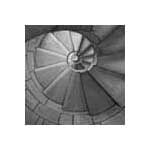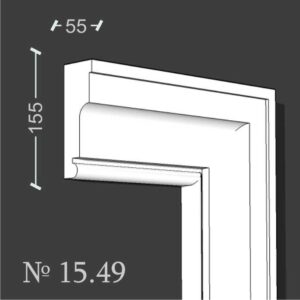In an era where sustainability is not just a choice but a necessity, the way we build and live in our homes is undergoing a profound transformation. Embracing eco-efficiency, architects and builders are turning towards innovative materials and technologies. Among these, solar panels and cross-laminated timber (CLT) stand out as beacons of sustainable living. This narrative explores how these materials redefine our living spaces, creating homes that are not only environmentally responsible but also aesthetically pleasing and functionally superior.





| Architects | http://www.sergiosampaio.arq.br |
| Images | www.leonardofinotti.com www.rafaelanetto.com |
Harnessing Solar Energy
Solar panels represent the pinnacle of harnessing renewable energy in residential architecture. By converting sunlight into electricity, they offer a clean, inexhaustible source of power. These panels, often installed on rooftops, silently capture the energy of the sun, reducing dependence on fossil fuels and lowering electricity bills. The visual appeal of sleek, modern solar panels also adds a contemporary edge to homes, symbolizing a commitment to a greener future.
Incorporating solar energy into home design goes beyond just the installation of panels. It involves a thoughtful orientation of the house to maximize sunlight exposure, ensuring that each panel works at its optimum capacity. Architects often combine this with other sustainable practices like using energy-efficient appliances and LED lighting, creating a holistic approach to energy conservation.
The impact of solar panels on reducing the carbon footprint of a home is significant. By generating clean energy, these panels contribute to a reduction in greenhouse gas emissions. This aspect is especially crucial in the fight against climate change, making solar-powered homes part of the solution. The long-term financial savings are an added bonus, making solar energy a wise investment for eco-conscious homeowners.
Beyond environmental benefits, solar panels offer a sense of energy independence. In areas prone to power outages or with high electricity costs, solar panels provide a reliable and cost-effective energy source. This independence is empowering for homeowners, providing peace of mind and a sense of contributing positively to the global environmental movement.




The Versatility of Cross-Laminated Timber
Cross-laminated timber is revolutionizing the construction industry with its strength, versatility, and environmental benefits. Made by layering and gluing timber sections together, CLT panels are strong enough to replace steel and concrete in many applications. This innovative material brings the warmth and natural beauty of wood into homes, creating spaces that are both inviting and structurally sound.
The use of CLT in residential construction offers numerous design possibilities. Its flexibility allows architects to create unique, complex shapes and open spaces, unhindered by the limitations of traditional materials. This architectural freedom enables the design of homes that are not just sustainable but also uniquely tailored to the needs and preferences of the residents.
Environmentally, CLT is a superstar. It is made from sustainably harvested timber, making it a renewable resource. The production process of CLT has a lower carbon footprint compared to traditional building materials like concrete and steel. Additionally, wood naturally sequesters carbon dioxide, meaning that CLT homes can actively contribute to reducing the amount of CO2 in the atmosphere.
CLT also excels in thermal insulation. Homes built with this material have excellent natural insulation properties, reducing the need for artificial heating and cooling. This energy efficiency is a key aspect of sustainable living, ensuring that CLT homes are not just environmentally friendly in their construction but also in their day-to-day operation.





Integrating Solar Panels and CLT
The combination of solar panels and cross-laminated timber in home construction represents the pinnacle of sustainable architecture. This integration allows for buildings that are self-sufficient in energy and made from renewable materials, setting a new standard in eco-friendly living. The synergy between these two materials creates homes that are not only functional but also architecturally stunning.
Solar panels complement the natural aesthetic of CLT, offering a modern touch to the traditional look of timber. The contrast between the high-tech appearance of solar panels and the organic feel of wood creates a visually striking façade, showcasing the blend of innovation and nature. This combination is appealing to homeowners who desire a contemporary home that still feels connected to the natural world.
The energy efficiency of CLT works hand in hand with the power generation of solar panels. CLT’s excellent insulation properties mean that less energy is required to heat and cool the home, maximizing the effectiveness of the solar-generated electricity. This synergy makes these homes incredibly energy efficient, reducing utility costs and environmental impact.
Furthermore, the combination of these materials speaks to a broader philosophy of sustainability. Homes built with CLT and powered by solar panels are physical embodiments of environmental stewardship. They represent a commitment to a sustainable lifestyle, inspiring others to consider how their choices can impact the planet.




Sustainable Living in Practice
Living in a home enhanced by solar panels and cross-laminated timber is an experience that transcends the ordinary. Residents of these homes enjoy the benefits of a reduced carbon footprint, lower energy costs, and the satisfaction of knowing their living space is contributing to a healthier planet. These homes are not just structures; they are statements of a sustainable, forward-thinking lifestyle.
The daily life in a solar-powered, CLT home is marked by a deep connection to the environment. The natural textures and colors of wood create a calming, grounded atmosphere, while the energy from the sun powers the modern conveniences of home. This blend of nature and technology creates a living space that is both comfortable and environmentally responsible.
The sense of community and responsibility that comes with living in such a home is profound. Homeowners often become advocates for sustainable living, sharing their experiences and inspiring others. This ripple effect can lead to a broader societal shift towards eco-friendly practices, proving that individual choices can have a significant impact.
For families, these homes provide a unique educational opportunity. Children growing up in solar-powered, CLT homes learn firsthand the importance of environmental stewardship. They witness the benefits of sustainable living, instilling in them values that will shape their future decisions and, ultimately, the future of our planet.

The integration of solar panels and cross-laminated timber in residential architecture is a significant step towards a more sustainable future. These materials not only enhance the efficiency and aesthetics of homes but also represent a deeper commitment to environmental responsibility. Living in a home that harnesses the power of the sun and embraces the natural beauty of wood is an experience that is both enriching and enlightening. It is a testament to the possibilities of sustainable living, offering a blueprint for a greener, more conscientious world.












